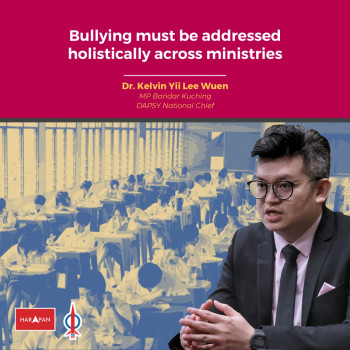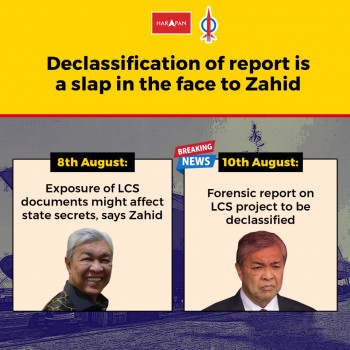by Charles Santiago
The light at the end of a tunnel usually means that one is finally finding a way out of a mess, unless of course if that light is from an oncoming train.
The Selangor state government’s explanation on why water from ex-mining ponds is safe for consumption is akin to a heads-on collision.
Now why do I say that? Before I go into the details, lets look at the “players” for lack of another word – the ex -mining pond is called Hang Tuah. We also have Sungai Selangor, the treatment plant and our homes.
There are eight other ex- mining ponds besides Hang Tuah.
The Selangor Water Management Board (LUAS) plans to channel water from Hang Tuah to Sungai Selangor during a low tide or dry season. And when the tide is high in the river, due to rain, the water is pumped back into Hang Tuah.
The rationale here is that the heavy metals would become diluted because of the increased amount of water. In short it’s a kind of a storage and dilution method.
And it’s disastrous because:
1. Water from Hang Tuah is channeled into Sungai Selangor during a dry season, leaving behind high concentration of heavy metals, which will pollute the river. During periods of drought or high demand, the amount of naturally occurring arsenic and other heavy metals become more concentrated when water levels decrease. Confronting a similar situation in Canada, public health officials said “communities were at a risk as contaminants in the mine water became more concentrated with less water available to dilute them.”
2. If there is rainfall the heavy metal content gets diluted. We can’t do a Houdini and make it disappear. Experts say that any amount of heavy metals, however small, will have an impact on the human body over time.
3. Therefore the water that gets channeled into the treatment plant will have heavy metals. And all four existing treatment plants, which use a conventional method, is not equipped to clean out heavy metals. To treat heavy metals, treatment plants must be designed to do the job. This is complicated and expensive.
4. LUAS concluded that the water from Hang Tuah conforms to the recommended raw water criteria. This cannot be conclusive as it was raining heavily in May. The water body should have conducted a similar study during a period of drought.
5. When I took up an issue against the Selangor state government, I used a study conducted by experts in University Malaya. A state representative responded by saying that their water sample comes from a different mining pond and therefore safe for consumption. This argument is fundamentally flawed as all mining ponds in Malaysia used similar methods and chemicals.
These are serious concerns as the consequences of a wrong strategy have the potential to affect the lives of hundreds of thousands of people.
Suruhanjaya Perkhidmatan Air Negara or SPAN, as regulator of the industry, should have come up with a protocol and guidelines about the use of water from ex mining ponds including a thorough Health and Environmental Impact Assessment Study.
As this is an issue that involves public health and environment the federal government and Selangor state government must engage the services of World Health Organization (WHO) experts to conduct a forensic water quality study.



